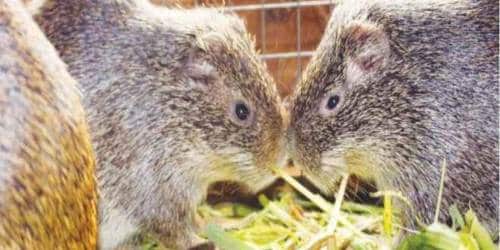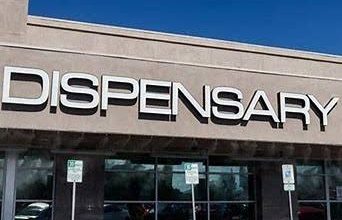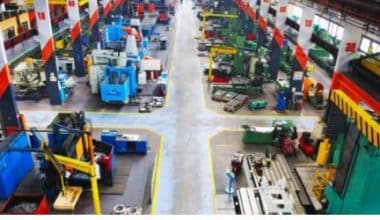For good reason, grasscutter farming is gaining popularity throughout Africa. Greater Cane Rat, also known as Grasscutter, is a rodent that is closely related to the porcupine, looking practically identical except for the porcupine’s larger size. Grasscutters are distinguished from genuine rats by their spiky fur on the back and rounded nose. When completely matured, it grows to a length of roughly 720 mm. If you take grasscutter farming seriously, you can earn at least N3 million each year. So, how can you begin Grasscutter farming in Nigeria, where this animal thrives? This article will go over that.
What are Grasscutters?
Grasscutters (Thryonomys swinderianus), also known as Cane Rats and Grass Cutter in English-speaking West African nations, Agouti in French-speaking West African countries, and hedgehogs in Central Africa, are rodents found in wet or grassy environments throughout Africa. Though these species are commonly killed in Africa, they, like other micro-livestock animals such as rabbits, can be domesticated.
The following are some of the traits of a grasscutter:
- Grascutters are placid and relatively prolific animal
- They become sexually active and mature at 5-6 months. At this age, they can reproduce and give birth to as high as 12 young.
- They can be easily reared or managed, and this made their domestication an alternative to poaching them in the wild.
- They can grow rapidly in intensive conditions
- The meat of a grasscutter is very rich in protein and economically valuable.
What Is Grasscutter Farming In Nigeria
The grasscutter, sometimes known as the “greater cane rat,” is a huge African rodent. It is one of West and Central Africa’s most important and extensively consumed wild animals.
The meat of the grasscutter is widely recognized as a delicacy and has been demonstrated to have a high nutritional value. Due to its potential as a profitable enterprise, grasscutter farming has recently gained appeal in Nigeria and other African countries.
Grasscutter animal farming in Nigeria is the captive breeding and rearing of grasscutters for meat production, and it has proven to be a viable alternative to hunting wild grasscutters, which is frequently illegal and unsustainable.
Why Do You Need to Raise Grasscutters?
The following are some of the reasons why you should pursue grasscutter animal farming in Nigeria:
#1. They are Very Cheap to Keep
With a wooden cage and one colony (a family of grasscutter breeders), you can begin breeding grasscutters. A grasscutter colony consists of one male and four females. A colony costs between 40,000 and 50,000 Nigerian Naira, depending on age and species. You should be able to get a decent cage built by an expert carpenter for under $10,000. You can position the cage wherever in your compound as long as it is not in direct sunlight.
#2. For Meat Production
Grasscutter animal farming in Nigeria is a good way to provide meat for human use. They are huge rats that grow quickly, are hardy, and live a long time. They gain a lot of weight in a short period of time and with very little food. That is, they are high-efficiency feed converters. In reality, they ingest and digest a vast variety of grasses and vegetables. There are many people that eat bush meat all around the world. The males can grow to be double the size of chicken meat. Furthermore, Thryonomys swinderianus grows quickly, and they are ready to be sold as breeders at 12 weeks of age. Cane rats are suitable for keeping and raising for market reasons due to their rapid maturation and low feed costs.
#3. For Breeding Stock Production
Breeding stock production is the most profitable aspect of cane rat farming. At 3-4 months of age, a cane rat is ready to be used as breeding stock. As I previously explained, a colony consists of one male and four females. A well-managed productive colony can produce between 50 and 56 cane rats each year. Can you visualize the money you’ll make?
#4. To Create Employment Opportunities
Many individuals are employed in the financing, production, processing, transportation, and exportation of grasscutter products. Furthermore, retaining grasscutter for local human use will reduce the rate of importing fish, turkey, chicken, and frozen meat, and exporting grasscutter meat will improve Forex revenues. GDP will rise, while inflation and unemployment will fall.
#5. To Make Profit
Grasscutter animal farming in Nigeria is one method for putting food on the table and earning money without spending a lot of money. Profits can be made by selling grasscutters to restaurant owners (live or smoked), manure to small-scale farmers and worm producers, and grasscutters to those who want to rear them.
Health Benefits of Grasscutters
Grasscutter animal farming is a profitable industry in Nigeria and Africa since it provides protein to many people. Grasscutters, sometimes known as cane rats, are Africa-native rodents. Here are 15 grasscutter health benefits:
- High in Protein: Grasscutters are high in protein, making them an excellent supplement to any diet. They include all of the necessary amino acids required for bodily tissue growth and repair.
- Low in Fat: Grasscutters have a low fat content when compared to other meats. As a result, they are a healthier option for people who want to maintain a healthy weight.
- High in Iron: Grasscutters are high in iron, which aids the body in the production of red blood cells. Iron is also required for energy production and immune system function.
- Vitamins: Grasscutters are high in vitamins such as vitamin B12, which is required for red blood cell synthesis, and vitamin E, which is a potent antioxidant.
- Boosts Brain Function: Grasscutters are high in omega-3 fatty acids, which have been shown to promote brain function and lessen the risk of cognitive decline.
- Lowers Blood Pressure: Grasscutters are low in sodium and high in potassium, making them an excellent choice for those looking to lower their blood pressure.
- Reduces the Risk of Heart Disease: Grasscutter nuts have a low-fat content and a high omega-3 fatty acid content, which may lower the risk of heart disease.
- Improves Digestion: Grasscutters are high in dietary fiber, which is necessary for proper digestion.
Types Of Grasscutter Farming Businesses In Nigeria
In Nigeria and Africa, there are two forms of grasscutter farming: intensive and widespread farming:
- Intensive farming: In this method, grasscutters are kept in cages or pens, and their environment is managed to meet their nutritional and housing requirements.
- Extensive farming: In this method, grasscutters are allowed to graze in open fields, and their feed is supplemented with grasses and other forages.
Both approaches have advantages and cons, and farmers choose their farming style based on their resources and aims. Intensive farming necessitates more investment and management, but it can result in higher production and profit, whereas extensive farming is less expensive but may give lesser yields. To balance their resources and goals, some farmers combine both strategies. Finally, the success of any grasscutter farming approach is dependent on adequate management methods such as feed, housing, hygiene, and disease prevention.
How to Breed or Raise Grasscutters
Keeping grasscutter breeders in cages or pens inside a secure shed is the most effective method of breeding grasscutter. It is crucial to select a decent location because it is critical for successful grasscutter rearing.
Other requirements for successful grasscutter animal farming include:
- The area or location should be easily accessible and free from flood.
- It must be well-ventilated and secured.
- There must be constant availability of forage and clean water.
- The size of the structure or pen is determined by the number of grasscutters retained and the output goals. A family of grasscutters, consisting of one adult male and four females, should be provided with a space of 1.6 to 2 m2.
Housing in Grasscutter Farming
Grasscutter, Breezeblock, brick, straw, and bamboo are just a few of the materials that can be utilized to build a rearing shed for a grasscutter animal. To lower construction expenses, it is usually recommended to use local materials.
The building must have adequate lighting and ventilation. The pen’s long sides must be low-walled (1.5 meters high), and the upper half can be covered with a chicken net. The rearing shed can be roofed with corrugated iron or other waterproof materials.
Instructions for Constructing a Grasscutter House, Pen, or Cage
Rearing Pen
Grasscutters are frequently housed and grown in pens. The amount of pens to build is determined by the manufacturing goals. One breeding female per pen is advised, with 0.2 m2 of floor space per adult grasscutter.
There are two kinds of grasscutter pens. They are known as Open Pens and Close Pens.
- Open Pens: These are enclosures with a surface area of 3 m2 and a height of 1.5 meters that are not covered at the top. The pens contain side entrances that allow the farmer to move in and out of the pens with ease.
- Close Pens: These are enclosures that are topped with suitable roofing material. These pens include chambers that may be divided. The surface area might be 2-3 m2 with a height of 0.8 m.
Feeding and Drinking Troughs for Grasscutters
These can be made of clay or cement, but they must be heavy enough to support the grasscutters. This is to keep the animals from knocking over the troughs. The farmer can build the troughs themselves by sculpting them out of wood or metal. Three grasscutters should share one trough.
Squeeze Cage
A squeeze cage is used to make it easier to handle grass clippers. It should have the same dimensions as the animal being handled. You can create a squeeze page by constructing a rectangular cage with fine-mesh screening. The average weight and variety of the animals should be considered when building this cage. It should not be designed in such a way that the animals inside the cage can turn or move around.
Health Management in Grasscutter Farming
In all facets of cattle farming, health management is critical. As a grasscutter or cane rat farmer, the health of your huge rats should be very essential to you since if they get sick, you’ll have to spend more money to treat them. Of certainly, your production costs are rising.
How Much is Grasscutter Animal in Nigeria?
The complete meat of a mature grasscutter animal sells in the market for between N3,500 and N5,000, and market women who sell it claim it is always in demand.
What is the Name of the Meat Grasscutter?
The cane rat, sometimes known as the grasscutter, provides a large amount of the game meat consumed. Its hunting in the wild, however, is associated with a number of environmental problems as well as a threat to the species’ survival.
What is the Difference Between Rat and Grasscutter?
The grasscutter animal (Thryonomys swinderianus), also known as the marsh cane-rat, groundhog, and, in francophone West Africa, the aulacode or, wrongly, the agouti, is a rodent but not a true rat because it is a member of the Hystricomorpha (porcupine family).
What are the Different Types of Grasscutter Animals?
Although various variants have been described, they all belong to the same species: smaller grasscutter (ThryonomysGregorianus) and larger grasscutter (ThryonomysSwinderianus), which may weigh up to 10kg or more in adulthood and has a head-and-body length of up to 60cm.
How Many Months Does It Take for Grasscutter to Grow?
Cane rat meat, often known as bush meat, is widely consumed in Nigeria. There are no restrictions on its use. Grasscutters are calm and prolific creatures, becoming sexually mature and capable of reproducing at roughly five to six months of age and producing litters of up to twelve young.
To summarize
To summarize, grasscutter farming is a viable business opportunity in Nigeria and Africa, with tremendous growth and income creation possibilities. Grasscutters and their goods are in high demand both locally and internationally, with export potential for Nigerian grasscutter farmers.
Grasscutter farming provides various advantages, including low capital investment, low maintenance expenses, and the capacity to create cash quickly. However, launching and running a successful grasscutter farming operation is fraught with difficulties, such as insufficient veterinary services, high death rates, and a lack of acceptable market access.
Related Articles
- ROOT BEER BRANDS: The Best List of Root Beer Brands to Follow in 2023, Updated!!!
- Penetration Test: Meaning, Examples, Types and Stages
- POULTRY FARMING BUSINESS: Baby-steps to Setup a Cost-effective Business in Nigeria
- Affiliate Marketing In Nigeria: A Guide For Beginners
- Best Online Business Ideas to Try Out in Nigeria 2023






